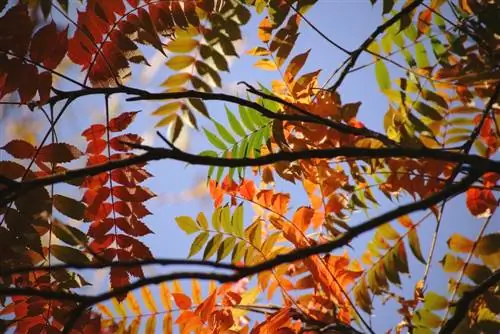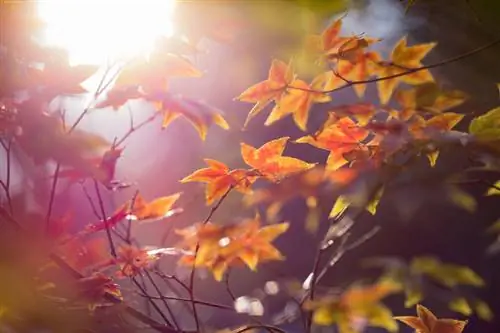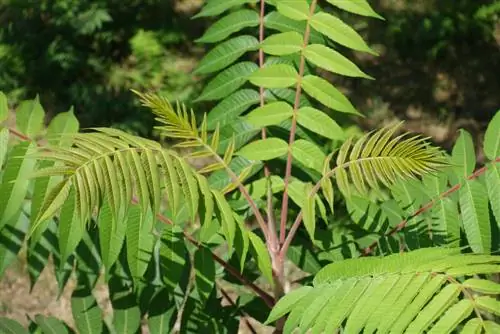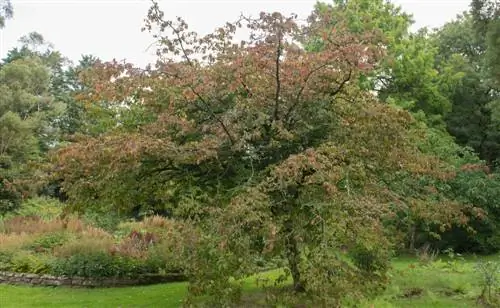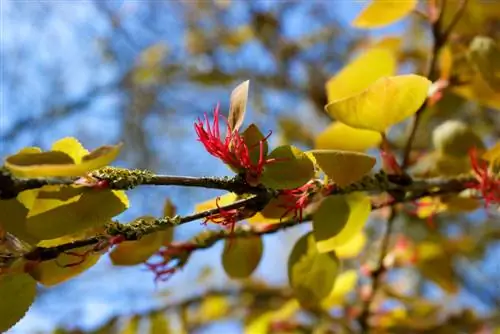- Author admin [email protected].
- Public 2023-12-16 16:46.
- Last modified 2025-01-23 11:21.
As summer comes to an end, trees and bushes prepare for the approaching winter. People can follow these processes. The foliage develops magnificent autumn colors. But exciting processes take place in the leaf itself.

Why does the vinegar tree change color in autumn?
The vinegar tree changes color in autumn because it breaks down the green leaf pigment chlorophyll and other pigments - carotenoids (orange), xanthophylls (yellow) and anthocyanins (red) - come to light. This process is part of preparing for winter.
Autumn Coloring
Vinegar trees are known for their beautifully colored autumn leaves. As shrubs prepare for winter, they break down the nitrogen-rich green leaf pigment. This chlorophyll has an important function in photosynthesis. Plants use solar energy to produce sugar. Photosynthesis stops in autumn. The chlorophyll is broken down into its components and stored. As a result, other dyes appear.
The leaves of the vinegar tree change gradually because the degradation processes of the individual dyes take place one after the other. Carotenoids are responsible for the orange color and appear after the green pigment has been broken down. In the second phase, vinegar trees dissolve the carotenoids, causing the xanthophylls to emerge. They produce a yellow color. After these substances have been stored, the anthocyanins emerge and the leaves glow red. This dye probably serves to protect the degradation products from UV light.
Leaf features:
- odd pinnate with nine to 31 leaflets
- Partial leaves with unevenly serrated leaf edges
- leaves up to 60 centimeters long
- Leaf shiny green on top, light to gray green underneath
leaffall
While the degradation process is taking place, a thin layer of cork is created between the branch and the base of the leaf. This cover closes the tracks and stops the flow of nutrients into the leaves, causing them to dry out. The leaves fall off in a light gust of wind. At the same time, the cork layer prevents parasites and pathogens from entering the organism.
Preparing for winter
Vegar trees outdoors are hardy down to temperatures of -20 degrees Celsius. They do not require any additional winter protection. Potted plants are somewhat more sensitive because their root ball is only protected by a comparatively thin layer of soil. Place the pot in a sheltered spot where frost is not expected. A bright room is ideal. Alternatively, you can wrap the plant pot with a few layers of garden fleece (€14.00 on Amazon) or foil. A block of wood or a styrofoam plate acts as an insulation layer between the bucket and the floor.

